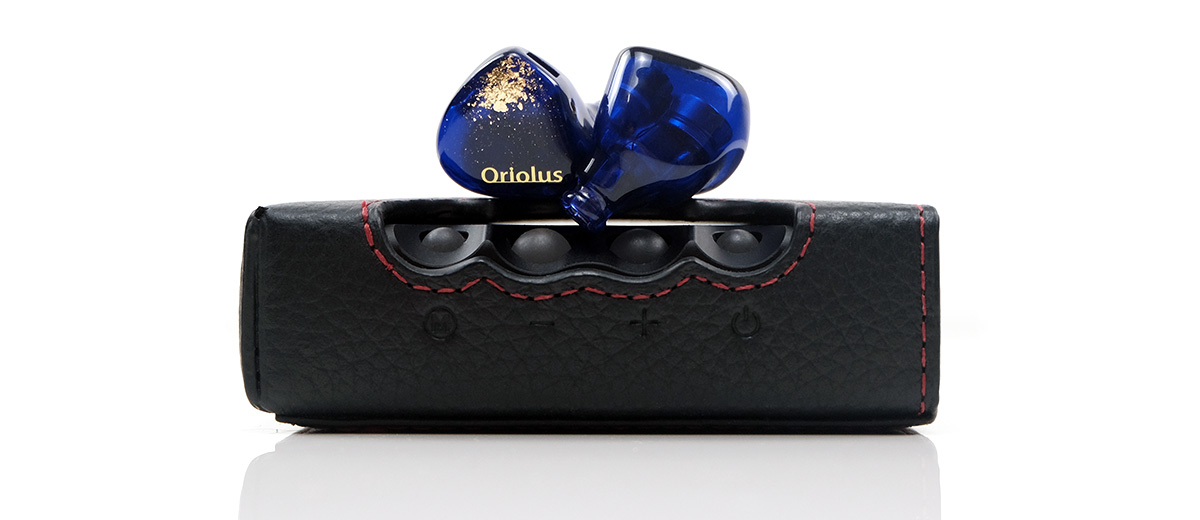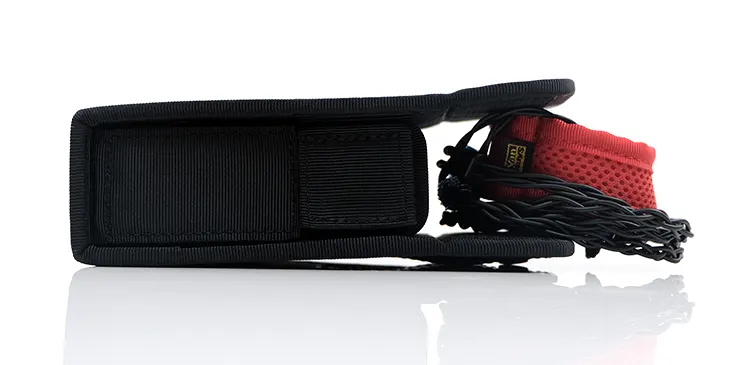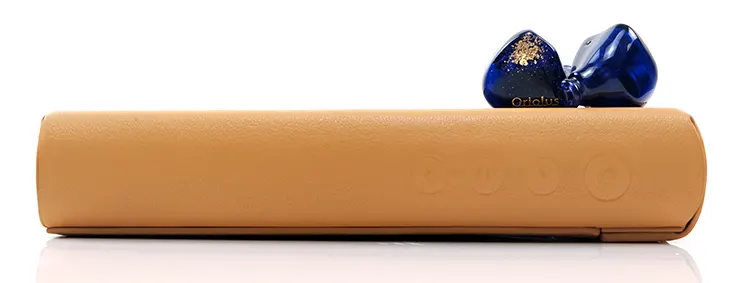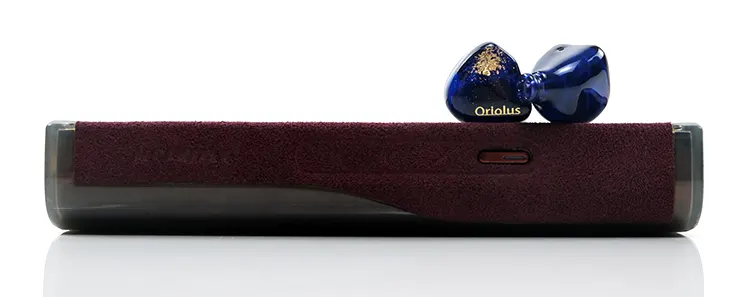Sound Impressions
The following sound impressions of the Oriolus Monachaa were completed using a mix of the HiBy R8 II and the Cayin RU7 as both source and amplification. The Monachaa was primarily fitted with the stock silicone tips but there will be some reference to the stock foam tip performance.
Summary
If I was pushed to come up with a single word to describe the sound of the Monachaa it would be tasteful.
This is not a cacophony of competing dynamic drivers noise but rather a finely-tuned presentation combining the merits of sticking to purely dynamic drivers such as power, texture, and coherence and mixing it with a surprisingly delicate appreciation of detail more akin to a hybrid driver sound.
Four different driver types and sizes afford Oriolus more room to utilize each of the unique strengths of that driver. Which, when you think about it, is exactly what a multi-driver configuration should do.
Those strengths include a firm and powerful sub-bass response, a lifted, clean-sounding vocal presence and upper-mids, and a balanced but well-extended treble presentation. All are wrapped in a deep and airy soundstage but also one that is not all macro and no micro.
Arguably, this is a V-shaped tuning with little in the way of bass bloat from a strongly separated bass-to-mids curve that prevents chest vocal masking with plenty of life and clarity in a neutral midrange timbral coloration to go along with it.
Again, I go back to the term tasteful because the control and attention to detail from the Monachaa presentation is perhaps the most impressive part of its performance. It does not gloss over the nuanced cues in the recordings in the way some single-dynamic drivers might tend to do.
You can tell each driver is giving you something a little different to create the right blend of texture and definition.
Frequency Response
The Monachaa frequency response is notable for a strong sub-bass emphasis but a short bass shelf. You get plenty of power from the tuning but not a huge amount of warmth or an ever-present mid-bass punch and upper-bass bloom.
The drop to a south-of-neutral lower mids curve at around 500Hz to 1k emphasizes the bass to mids separation, rendering lower-mids timbre a little more to the light and lean side with a lower fundamental is not called upon.
From 1-2k, the Monachaa is north of neutral though not too forward to come across as shouty. Vocals benefit from the lack of lower register bloom, sounding clear though not as dense in tone compared to the likes of the FIR Audio e12.
The one area that some might find challenging is the noticeable 7-8k peak, especially, if you are breaking the Monachaa in or using the stock silicone tips with bright sources or recordings.
On either side, the FR is relatively calm or Harman neutral so it’s more of a light sheen on midrange notes than grating sharpness but it does help create more of an ethereal tone to the Monachaa upper register.
Timbre
Overall, the Monachaa is analog from top to bottom but colored neutral with a slight hint of warmth on its lower register and more clarity and sparkle on the upper register.
Midrange notes and vocals have a natural level of decay, nothing too dry or abrupt sounding, and with good texture. They do, however, come across as slightly lighter in terms of body when compared to the likes of the more rounded and denser Trifecta and the e12 dynamic driver timbre.
The Monachaa lows have an incredible bass fundamental but it is otherwise relatively neutral if the note register does not reach 100Hz or lower.
The mid-bass punch and upper-bass bloom are south of neutral meaning for the e12 and Trifecta you might perceive the bass response of the Monachaa as not being the densest or weightiest.
That is until a note reaches sub-50Hz then the Monachaa outperforms both of them with more perceived ‘sub-sonic’ rumble. It’s a subtle difference rather than overt unless you are using test tones.
The 7-8k peak on the Monachaa will render some of the harmonic balance of the mids timbre a bit more to the upper than the lower creating some zing in the overtones.
It’s not a hugely warm sound signature through the upper mids but I do wonder if this was done on purpose to provide some additional contrast on notes to enhance perceived clarity.
Staging & Dynamics
So often with dynamic driver designs you get plenty of grandeur without the same level of fast articulating micro-detail that you would associate more with BA drivers.
The lines are somewhat more blurred with the Monachaa. You get excellent dynamic driver depth and airiness to its soundstage but also some impressive clarity and speed through a surprisingly holographic midrange and upper register.
If the recording calls for noticeable sub-bass depth the Monachaa will deliver it but if not, then the rest of the bass to lower-mids imaging remains relatively neutral in its positioning. Feed it some good voltage and you can also tighten up the bass response considerably, improving the sense of space in its lows.
Vocal positioning is slightly forward for the lower register and more neutral in the upper register. The treble presence is heightened around 7-8k and again just above 10k. That should tease out a brighter overtone, further defining notes and increasing the perception of air and depth to the Monachaa soundstage.
Sources will further tweak or emphasize certain aspects of the Monachaa soundstage. The likes of the HiBy R8 II will tease out a more open midrange and improve the bass amplitude.
Dongles such as the HiBy FC6 will emphasize the bass weight and vocals but pull in instruments to create a more intimate soundstage. The Cayin N7 and RU7 will relax the mids and highs a little but enhance the perceived staging space and width.
Synergy
Sensitivity & Efficiency
The Oriolus Monachaa is rated at 24Ω and 111 dB/mW which should not pose too many issues for portable sources such as DAPs and dongles. Especially, since the cable’s 4.4mm termination demands that you go balanced by default where the superior power often resides.
Despite its relatively easy-to-drive performance I would advise tinkering a bit with the gain level of your source device as it does affect how vivid the Monachaa sounds.
For example, with low gain on both the Cayin N7 and the R8 II, the sound was a little on the soft and pleasant side but as soon as I switched up to medium gain the bass quality sounded more taut and impactful with a little more spice on the highs also. The best way to describe it is polite on low gain and exciting on the DAP’s respective medium gain settings.
I kept all dongle pairing on a high gain setting also but that is normal for most of my IEM pairings and I do tend to find this offers a bit more impact, especially with the 4.4mm balanced output.
DAP Pairings
I tested 3 DAPs and one portable amp/DAC. The DAPs were the Cayin N7, the Luxury & Precision P6 Pro, and the HiBy R8 II.
The portable amp/DAC was the Chord Electronics Mojo 2 and this is where I will kick things off because out of the four, this was the most neutral-sounding pairing.
I was not a huge fan of the Mojo 2/Monachaa performance using the silicone tips. The bass sounded a bit flat compared with some sharpness in the upper mids.
It is a better pairing with the foam tips for smoothing the highs with a nice set of clean and accurate mids. However, the sub-bass didn’t have the same assured presence compared to the DAPs.
Out of the three DAPs, the juiciest bass response was the HiBy R8 II. This is an excellent pairing using the silicone tips and the source that teased the best extension and the most open-sounding midrange performance. It is a little cleaner than the other two DAPs though the mids and highs but nothing too sharp sounding.
If you want to stick with the silicone tips and tame the highs a bit more the P6 Pro and the N7 are better options with the Monachaa.
The one thing I love about the silicone tips option is how much more open-sounding the Monachaa is compared to the foam alternatives. You retain that with the N7 more than the P6 Pro.
Of the three it is the most relaxed pairing, pulling the vocal imaging back a bit more and enhancing the Monachaa’s staging width.
The P6 Pro did well fleshing out the bass and vocal texture. It did not expand the Monachaa quite as much as the N7 and sounded a little more intimate. However, it was not as relaxed as the N7 so a good pairing if you value a nice firm bass response and a very natural vocal sound.
Dongle Pairings
I tested 3 dongles with the Monachaa and there was one clear winner, the Cayin 1BIT RU7. The other two were the HiBy FC6 and Cayin’s R-2R version, the RU6.
The FC6 will up the bass level and enhance vocal presence pulling in the Monachaa soundstage to create a weighty but intimate soundstage. The drivers didn’t sound all that well separated on the lows as well as a little roughness in the upper-mids coming through.
The RU6 sounded much smoother through the mids and highs and if you are a vocal fan it produces some intoxicating higher-pitching vocals with no noticeable roughness, even with the silicone tips. The bass, however, was two-dimensional and a bit flat with a soundstage that was a little too focused on the Monachaa mids.
The RU7/Monachaa pairing immediately sounded much bigger and more resolving than with the FC6 or the RU7.
You lose some vocal forwardness but gain much more in wider imaging and better stereo separation. I would also pick this pairing over the Mojo 2 for its better sense of space and smoother highs.





